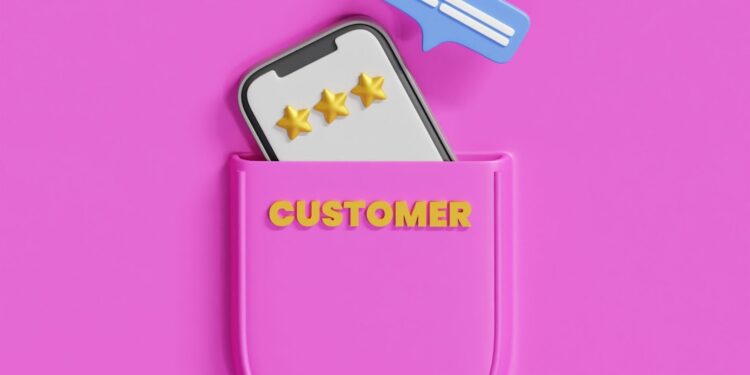Image from Unsplash
In the modern marketplace, personalized marketing has become more than just a buzzword, it’s now a strategic necessity. Whether you’re a legacy brand or a new entrant, the ability to tailor content, products, and experiences to specific customers can make or break your relevance.
Even smaller brands are leveraging digital platforms and services like Printmoz to elevate their visibility and maintain a competitive edge. As the lines between online and offline engagement blur, these businesses are showing that size doesn’t always dictate success.
Let’s explore how personalized marketing is reshaping the competitive landscape and empowering small businesses to stand tall next to global giants.
What Is Personalized Marketing?
Personalized marketing refers to the practice of using data and technology to deliver individualized messages and offers to customers. This approach goes beyond addressing someone by their first name in an email. It involves:
- Recommending products based on past purchases
- Sending location-specific offers
- Displaying targeted ads on social platforms
- Delivering tailored website content or dynamic landing pages
It’s all about making customers feel seen and understood, which in turn boosts brand loyalty and conversions.
Why Personalization Works
Customers now expect relevance. Studies show that consumers are more likely to engage with brands that offer personalized experiences. According to a 2023 report by McKinsey & Company, 71% of consumers expect personalization, and 76% get frustrated when they don’t find it.
The data is clear: personalization not only improves the customer journey but also drives business performance. It creates a feeling of one-to-one interaction, even when a brand is communicating with thousands of users simultaneously.
Leveling the Playing Field for Small Brands
Big brands might have the budget for expansive AI systems and dedicated personalization teams, but technology has made it easier for small businesses to harness similar strategies, without breaking the bank.
Services like Printmoz offer on-demand printing solutions for signage, packaging, stickers, and banners, enabling small businesses to create custom-branded assets quickly and affordably. Whether it’s personalizing booth displays for events or printing limited-run packaging, these tools allow small companies to act fast and look just as polished as their larger counterparts.
Moreover, marketing automation tools like Mailchimp, ActiveCampaign, and Klaviyo allow even solopreneurs to send personalized emails based on user behavior and preferences.
Examples of Small Businesses Winning with Personalization
Here are just a few examples of how small brands are creatively using personalization:
- Local Cafés – By using customer purchase data, cafés are sending “favorite drink” coupons through SMS or email, boosting return visits.
- Etsy Sellers – Many small creators are including handwritten notes or name-engraved gifts with each purchase to strengthen customer relationships.
- Boutique Fitness Studios – Personal reminders for class bookings or fitness goals through branded apps help keep clients engaged.
The Power of Microtargeting
One of the most important tools in a small brand’s personalized marketing toolbox is microtargeting. Rather than targeting a broad demographic, microtargeting allows brands to segment their audience by behavior, interests, and needs.
For instance, a bike shop might send different email campaigns to casual riders vs. competitive cyclists. This makes every communication feel more relevant and intentional, even if the brand has a limited product range. Microtargeting is not only cost-effective, it also improves ad performance and customer satisfaction.
Print Marketing Is Evolving Too
While digital channels dominate the conversation around personalization, physical marketing is also experiencing a revival. Personalized direct mail campaigns, QR-coded flyers, and event-specific signage are becoming more popular, and effective.
Companies like Printmoz allow small businesses to customize these materials in ways that were once only accessible to larger corporations. From variable data printing (where each item in a print run is different) to quick-turnaround branded signs for pop-up shops, personalization has found its way into the physical world.
And when these physical experiences tie into digital campaigns, like scanning a personalized postcard that leads to a tailored landing page, the impact multiplies.
Privacy and Transparency: The New Pillars of Trust
Of course, personalization walks a fine line with privacy. Today’s consumers are more aware of how their data is collected and used, and they demand transparency.
According to the U.S. Federal Trade Commission (FTC), businesses must not only secure user data but also clearly disclose how it’s being used. Consent-based marketing, first-party data collection, and clear privacy policies are becoming non-negotiable.
Small businesses, in particular, must strike a balance between personalization and ethical data practices. Done right, it builds lasting trust.
Tips for Small Businesses to Start Personalizing
Image from Unsplash
Here’s how any small business can begin building a personalized marketing strategy:
Start with segmentation: Even if you’re only using email, break down your list by behavior, location, or preferences. Send different messages to different groups.
Use your data: Review past purchases, browsing history, or feedback forms to guide your messaging and product recommendations.
Leverage tools you already use: Platforms like Shopify, Squarespace, and even Instagram have built-in analytics and personalization features.
Test and learn: Try A/B testing different email subject lines, website layouts, or product suggestions. Small wins can add up to big gains.
Make it feel human: Sometimes the best personalization isn’t algorithmic, it’s personal. A handwritten note or a personal follow-up message after a sale goes a long way.
Looking Ahead: The Future of Personalized Marketing
As technology advances, so will personalization. Voice assistants, AR shopping experiences, and predictive analytics are just a few areas where even small brands can begin experimenting. The key is to stay adaptable.
But at its core, personalization isn’t just about data, it’s about empathy. Small businesses have an advantage here. Their close customer relationships and community focus naturally lend themselves to authentic engagement. By combining tech with heart, small brands can not only survive, but thrive.
In today’s noisy digital landscape, personalization is the bridge between attention and loyalty. With the right tools and strategies, small businesses can deliver experiences that rival (and often surpass) their bigger competitors. Thanks to platforms like Printmoz and easy access to marketing tech, personalization is no longer a luxury. It’s a strategy every small brand can use to grow.













